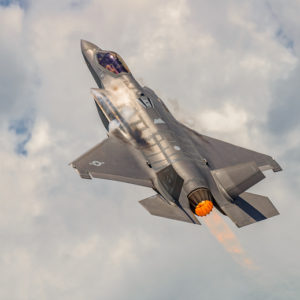When a consumer spends top dollar on a new home or car, they want everything to be perfect. They can be some of the most expensive purchases the average American makes in their lifetime. Buying a new home causes the American family to drain savings accounts and find cuts on non-essential expenditures. Many do it for the chance to get into a “turn-key home” requiring little to no home improvement projects.
Buying a new car ends up putting a person on the hook for a small mortgage payment for 6 years. Sure, there is always the option to buy used, but used comes with an increased risk of imperfections. When someone drops cash for new, they do so with the hopes that they will be free and clear of car maintenance issues for some time.
That is not what the American taxpayer is getting with the F-35 Joint Strike Fighter Program. They are paying top dollar for mediocre.
Ultimately, it is the taxpayers who are on the hook when the government hands a contractor hundreds of billions for a product that is not all that great. For the cost of the GDP of a small nation, the American taxpayer just got a flying lemon – over $1.5 trillion on a tool for the Pentagon that is far from perfect.
Right now, taxpayers are getting ripped off by a government contractor. The government uses phrases like “full-rate production” to confuse taxpayers into misunderstanding that they are paying top dollar for a fighter jet that is not ready for prime time. Air Force Magazine reported on March 17, “the Pentagon won’t declare the F-35 to have completed development for a few months more at least, but even when that happens and the program is declared ready for full-rate production, there won’t be a big jump in the jets coming off the production line, the program office reported.” Translated into English, the F-35 is not ready to be used as intended after years of delays and cost increases.
One of the biggest problems is this program has already been deemed obsolete by some experts in the field. Sean McFate, a Georgetown professor and five-times published author wrote in The Hill last month, “as a war machine, the F-35 is already obsolete junk.” He points out “the United States has been at war continuously since Sept. 11, 2001, yet the F-35 has flown zero combat missions. Zero.” In other words, it may have utility in flying over MLB baseball games and NASCAR events, but as a combat aircraft, it is not great.
Experts in the field are horrified at the cost. McFate tags the cost at $1.7 trillion. Bloomberg reported on September 11, 2020 “the Pentagon’s five-year budget plan for the F-35 falls short by as much as $10 billion, the military’s independent cost analysis unit has concluded, a new indication that the complex fighter jet may be too costly to operate and maintain.” Only in Washington could an accountant miss the mark on cost by $10 billion without being fired. In this case, Congress just appropriates more money for the program to cover shortfalls. The Bloomberg report indicated that “the Defense Department’s blueprint for the next five fiscal years calls for requesting $78 billion for research and development, jet procurement, operations and maintenance and military construction dedicated to the F-35 built by Lockheed Martin Corporation. But the cost analysis unit estimates $88 billion will be needed.” Considering how hard it is to get Congress to spend $10 billion on anything, it is shocking that nobody blinks an eye when a contractor comes in $10 billion over budget.
When taxpayers hear that the F-35 lacks “full-rate production” they should understand that this means they are getting taxpayer-funded incompetence and more government overspending.

